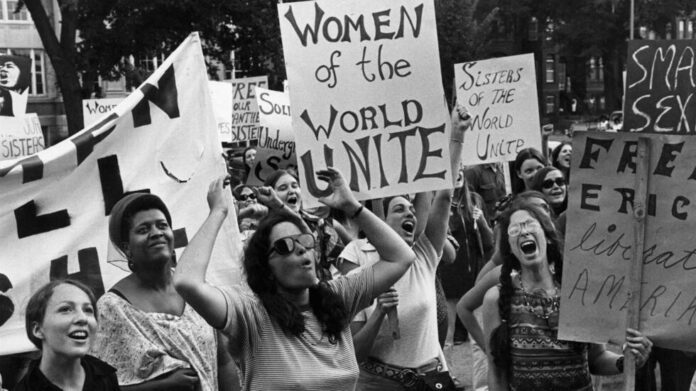In the contemporary discourse surrounding feminism, liberal feminism frequently emerges as a dominant paradigm. Yet, a critical analysis reveals substantial shortcomings within this framework. Standing at the intersection of individualism and equity, liberal feminism posits that women can achieve gender equality through systemic reform within existing social and political structures. However, it is essential to interrogate the efficacy and inclusiveness of such an approach.
At its core, liberal feminism advocates for equal rights and opportunities, centering its activism on legal reforms, such as the right to vote and workplace equality. While these goals are undoubtedly significant, this perspective often leads to an oversimplification of gender inequality. Moreover, it tends to prioritize the experiences of privileged women, thus marginalizing voices from lower socio-economic backgrounds, women of color, and those who identify within the LGBTQ+ spectrum. To better understand the limitations of liberal feminism, it is imperative to delve into three key areas: its focus on individualism, its complicity in systemic inequities, and its failure to address intersectionality.
Individualism: The Double-Edged Sword
One of the principal tenets of liberal feminism is its unwavering commitment to individualism. This ideology champions the notion that women should be given the same rights as men, presupposing that equality will automatically follow once legal barriers are removed. However, this foundation presents a double-edged sword. By emphasizing individual rights over collective action, liberal feminism inadvertently overlooks the deeper systemic issues that pervade gender inequality.
The emphasis on personal agency can be deceptively empowering, leading many to believe that self-determination alone can dismantle entrenched patriarchal structures. Yet, this perspective risks marginalizing women who lack the resources or societal support to advocate for themselves effectively. For instance, a woman from a socio-economically disadvantaged background may struggle to access the same opportunities as her more privileged counterparts. Consequently, the linchpin of liberal feminism—individual empowerment—can exacerbate existing disparities rather than ameliorate them.
This individualistic approach also engenders a certain level of elitism within feminist discourse. When the voices of affluent, white, and heterosexual women dominate the narrative, the lived experiences of marginalized groups are relegated to the periphery. Such a phenomenon raises critical questions about the inclusivity of liberal feminist ideologies: Whose rights are truly being championed? And at what cost does this pursuit of equality come to those who remain unseen?
Complicity in Systemic Inequities
Moving beyond individualism, another area of concern lies in the complicity of liberal feminism in perpetuating systemic inequities. Although liberal feminists advocate for reforms within existing institutions, they often fail to challenge the underlying frameworks that sustain inequality. This can lead to a superficial understanding of social justice, wherein the focus remains on achieving parity within a fundamentally flawed system rather than deconstructing and reconstructing it entirely.
Moreover, the reliance on state mechanisms for change often results in a limited scope of progress. Legal reforms, such as equal pay legislation, while necessary, can serve as mere band-aids to more profound societal ailments. Such reforms do not inherently alter the dynamics of power that characterize male-dominated institutions. In essence, liberal feminism tends to operate within a reformist paradigm, inadvertently reinforcing the very systems it seeks to challenge.
This reformist approach can be seen in the prioritization of gender equality within the confines of capitalism, which often sidelines economically disenfranchised women. The concept of the “lean-in” feminism exemplifies this issue; it promotes the idea that women can ascend the corporate ladder through personal ambition and adherence to workplace norms. While this message may resonate with some, it fails to address the systemic barriers that inhibit many women from even entering the workforce. Thus, liberal feminism may, at times, support a capitalist framework that profoundly disadvantages a significant portion of the female population.
The Intersectionality Conundrum
Perhaps the most glaring limitation of liberal feminism is its inadequate attention to intersectionality. Coined by legal scholar Kimberlé Crenshaw in the late 1980s, intersectionality articulates the importance of recognizing how various social identities—such as race, class, and sexual orientation—interact to shape individual experiences of oppression. Liberal feminism, however, often operates from a monolithic perspective that tends to universalize women’s experiences. This lack of intersectional analysis can render entire groups of women invisible within feminist discourse.
For instance, the liberal feminist narrative typically focuses on the plight of white, middle-class women, sidelining the unique challenges faced by women of color, indigenous women, and those from lower socio-economic backgrounds. Such omissions not only diminish the richness of feminist thought but also perpetuate a façade of unity that obscures the reality of diverse experiences. Feminism, in its pursuit of equality, must also account for the multiplicity of identities that influence how women navigate patriarchal systems.
The necessity for an intersectional lens in feminist discourse brings to light the disparities that exist within women’s rights movements themselves. Striving for gender equality within a singular framework neglects the geographies and sociopolitical contexts that shape women’s realities. As a result, liberal feminism’s limited scope often leads to policy proposals that are ineffective, if not detrimental, to the women they intend to benefit.
Conclusion: Toward a More Inclusive Feminism
In reflecting on what is fundamentally wrong with liberal feminism, it becomes evident that a reconfiguration of feminist ideologies is necessary. While liberal feminism has greatly contributed to advancing women’s rights, it is time to challenge the underlying assumptions that guide its framework. A more comprehensive feminism must grapple with the realities of individual experiences, engage critically with systemic inequities, and prioritize intersectionality to encompass the vast array of women’s voices.
By acknowledging the limitations of liberal feminism, we can pave the way for a more inclusive and effective feminist movement. One that recognizes that true gender equality cannot be achieved solely through legal reforms but requires a profound transformation of the societal structures that govern women’s lives. Embracing complexity and acknowledging the intersectional nature of oppression will not only enrich feminist thought but also catalyze tangible change for all women.





























